.

Western Meadowlark (Sturnella neglecta), singing, Morro Bay, California: photo by Alan D. Vernon, 9 February 2008
The meadow larks and the crows don't exist for each other. The lark is apparently always in flight. There is no question that the meadow lark is the loveliest of flying things. It has a slight manner when flying close to the ground, as one is walking across the field, of suddenly rising, sliding right into you with a turn that presents its blurred blue back, and the swift impression is that it is coming straight on back first, the outline of the tail, with the two streamers, the delicate feathering and quivering undercamber of the wings. But I suppose all it did was to turn, a bit, in its course. Then it flies with incredible speed two inches off the ground in a zig-zag line. But whatever manner it chooses, one's senses lag, in picking up the movement, a very sharp sensation, in this case. Or then, it seems, they will tumble together and roll over and over flashing the deep blue wings and the buff yellow breast, as it is with a slow color wheel. Everything flashing in the sun, low, over the green and yellow stubble of the field. What flying! The sheer exactitude of flying complexly and exhaustively, on the air, at that slight height, to the near ground. One sees how flying high in the sky loses its preciseness as flying and becomes, merely, "going someplace," as the crow does, who is better off on the ground, or the eagle, who is known for his nest, or as man, who created a considerable misery in the language when he spoke of himself as "flying," when all he ever did was transport himself in a straight line, a mostly mercantile endeavor from the beginning. Bad flight, in birds as well as man, is curious. One hears of some birds being quarrelsome. And it is known that a crow has a suspiciously high number sense. One can discern as many as five men going into a building, and knows when only four come out.
Edward Dorn: from Notes from the Fields: Skagit Valley, in Measure, 1958

Western Meadowlark (Sturnella neglecta), in flight, Manitoba: photo by Stewart Oikawa, 16 July 2012
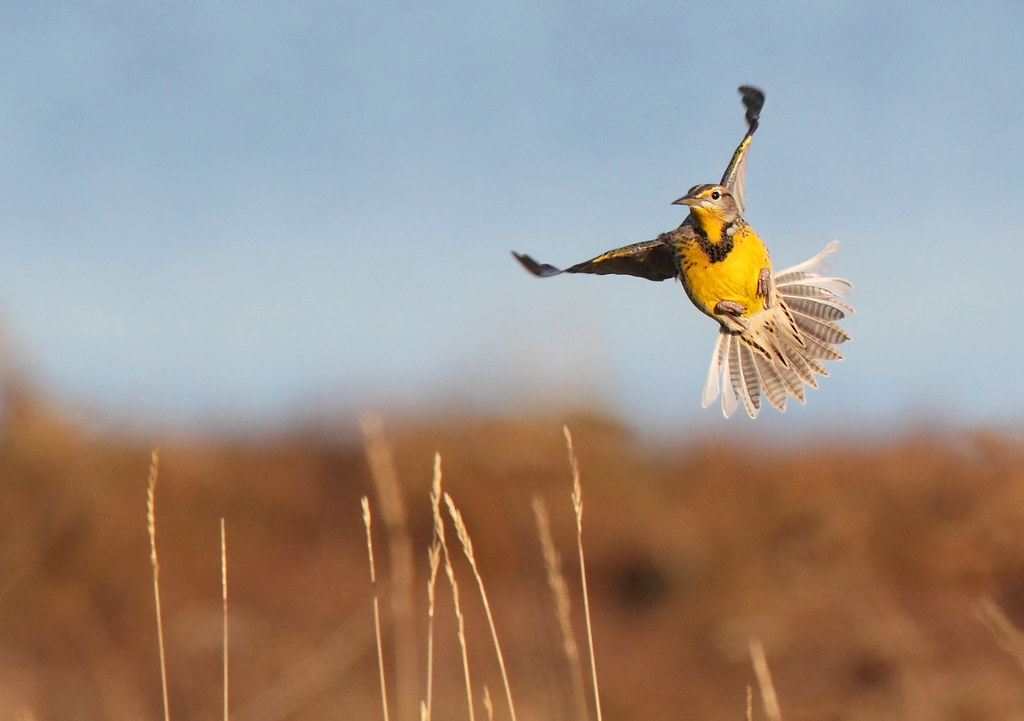
Western Meadowlark (Sturnella neglecta), Blackie Spit, Surrey, British Columbia: photo by Mike Baker, 16 October 2011
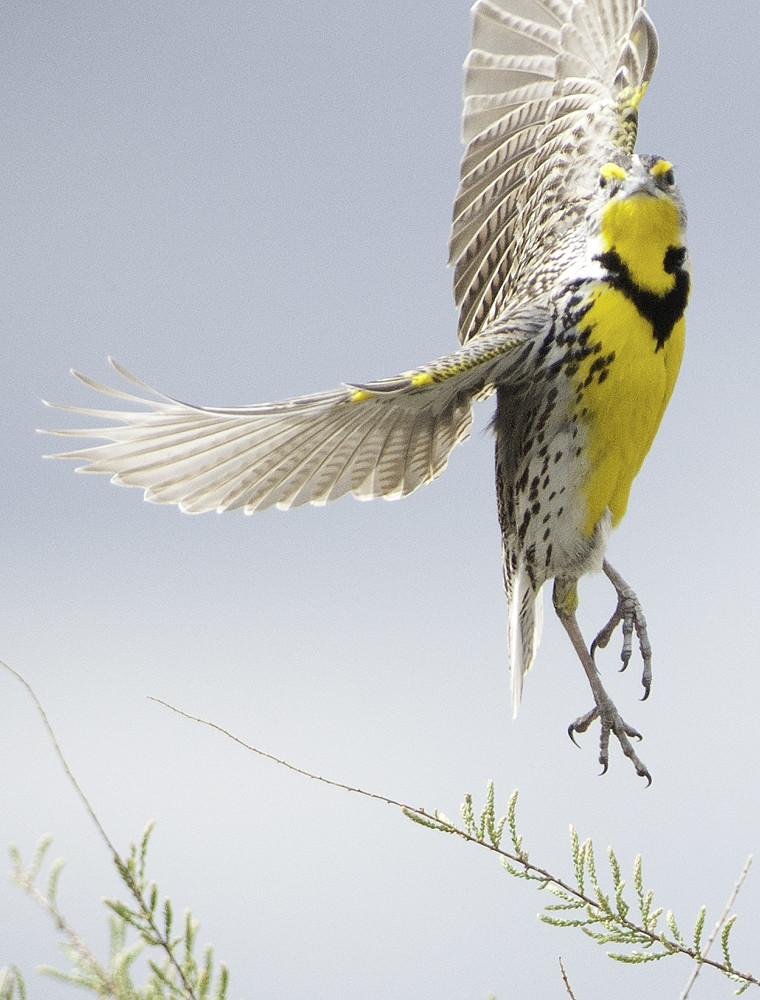
Western Meadowlark (Sturnella neglecta), in takeoff, Antelope Canyon, Utah: photo by Steve Courson, 20 May 2011
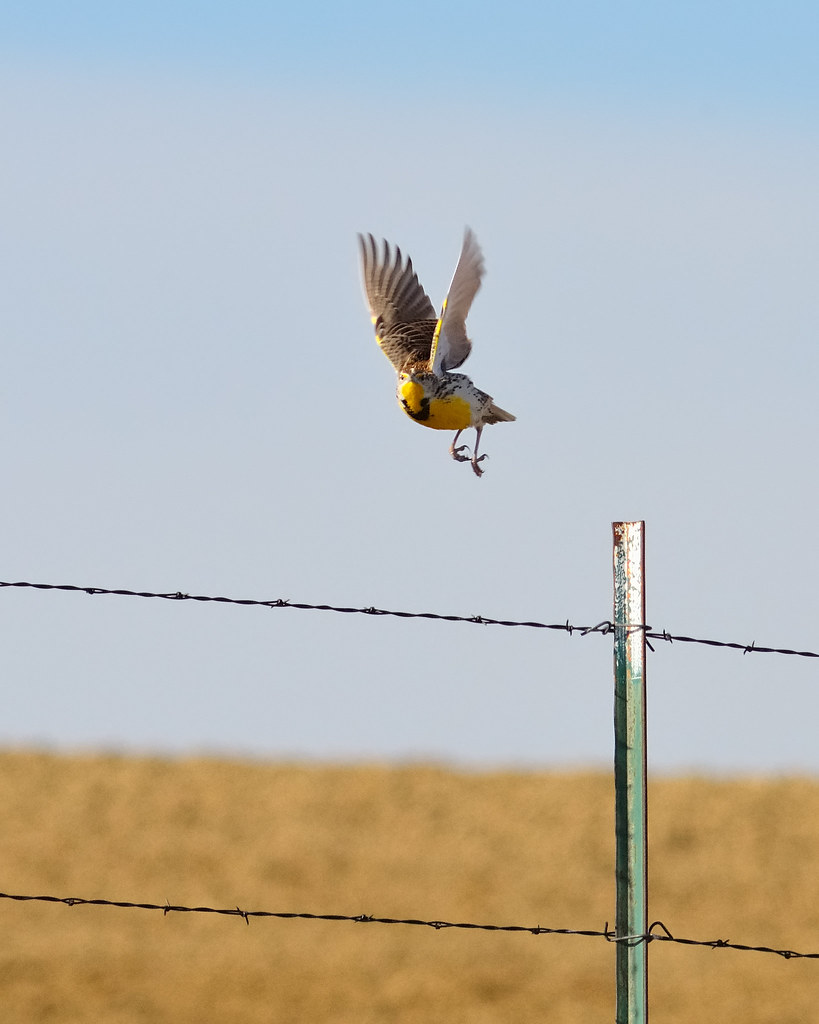
Western Meadowlark (Sturnella neglecta), in liftoff, Fossil Creek Reservoir, Fort Collins, Colorado: photo by Michael Menefee, 5 April 2008
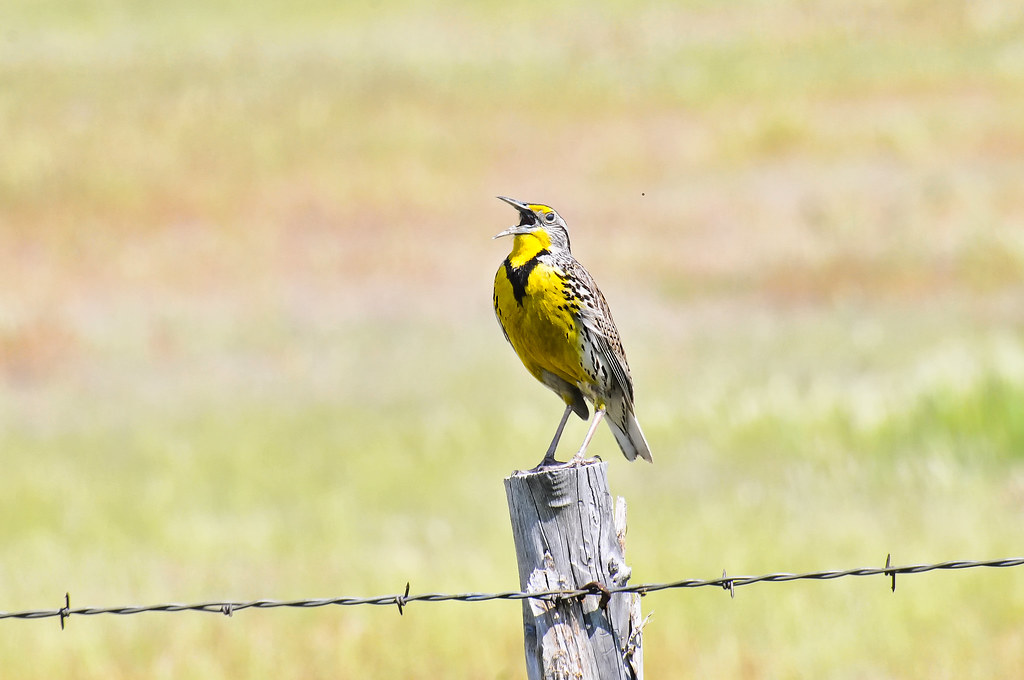
Western Meadowlark (Sturnella neglecta), Bear River Migratory Bird Refuge, Utah: photo by Robinsegg, 25 May 2009


Western Meadowlark (Sturnella neglecta), Colorado Springs, Colorado: photo by Matt Bango, 3 October 2010
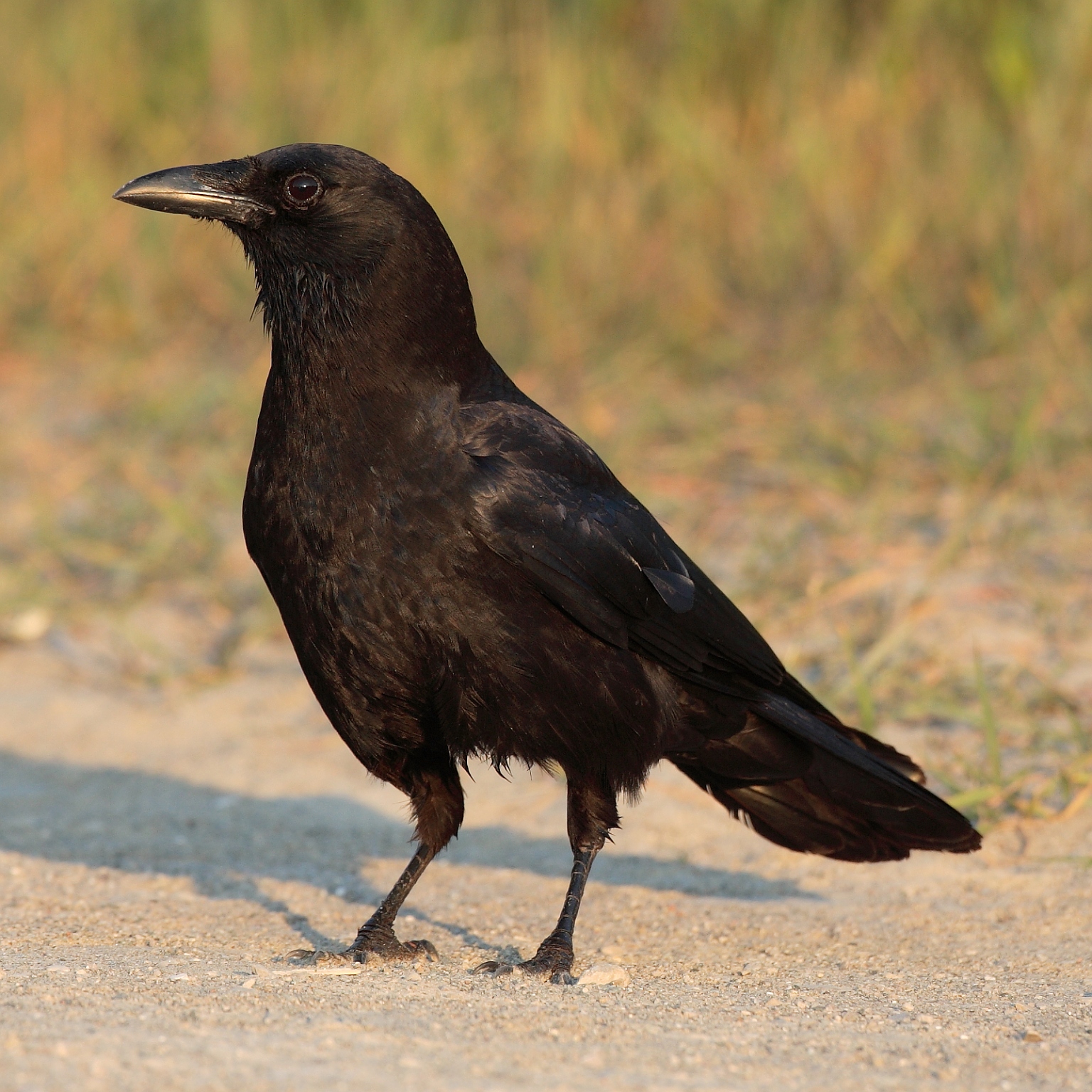
American Crow (Corvus brachyrhynchos), Singing Sands, Bruce Peninsula National Park, Canada: photo by Mdf, 26 June 2009
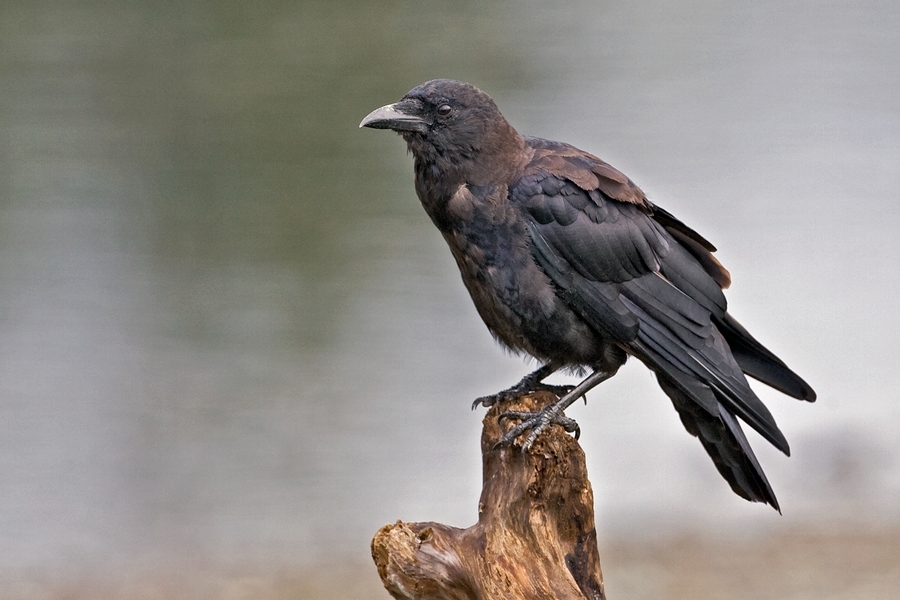
Northwest Crow (Corvus caurinus), Esquimault Lagoon, Colwood, near Victoria, British Columbia: photo by Alan D. Wilson, 2007
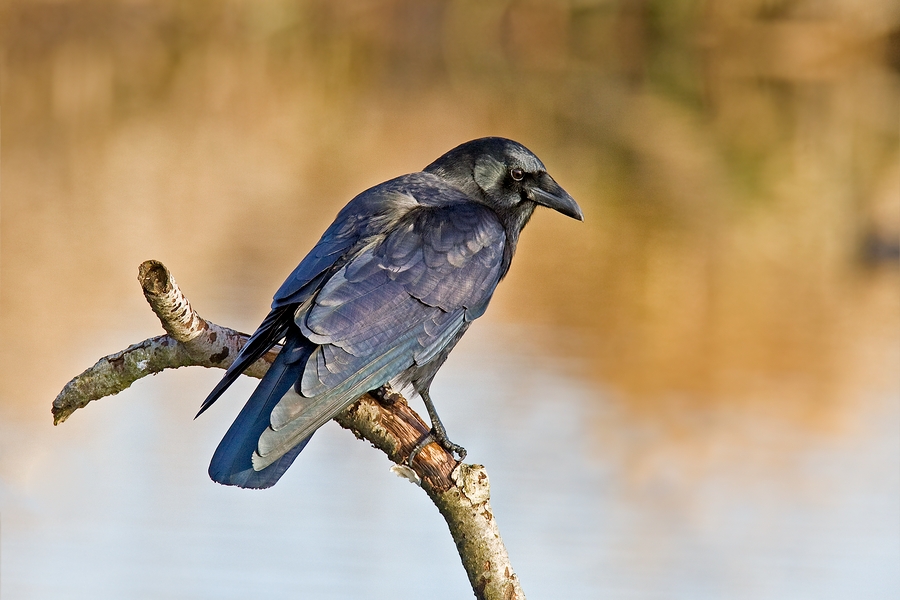
Northwest Crow (Corvus caurinus), Burnaby Lake Regional Park (Piper Spit), British Columbia: photo by Alan D. Wilson, 2010
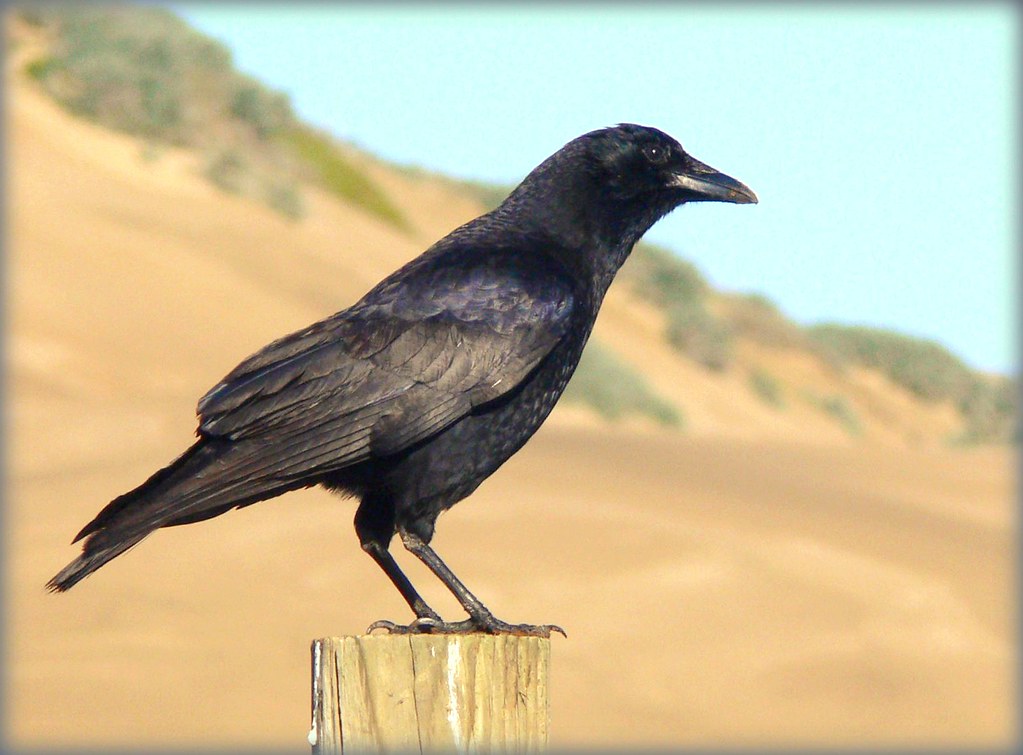
American Crow (Corvus brachyrhynchos) near Shark Inlet, Los Osos, California: photo by Linda Tanner, 25 May 2009

No comments:
Post a Comment